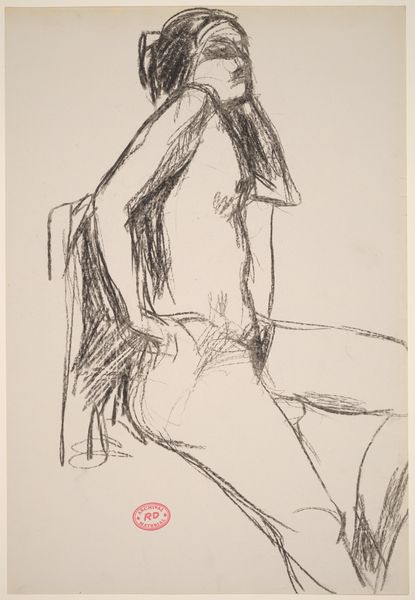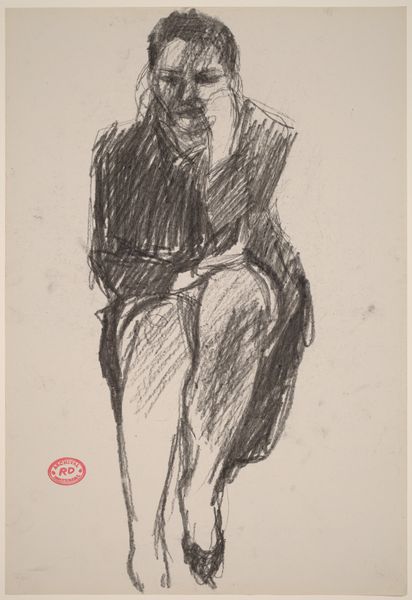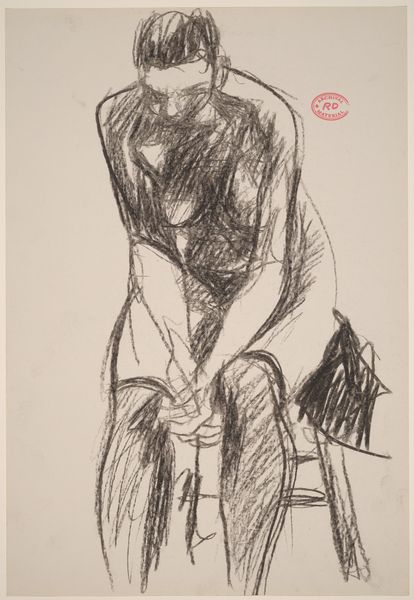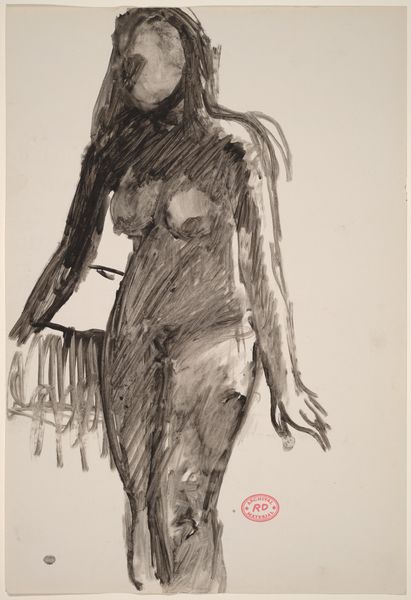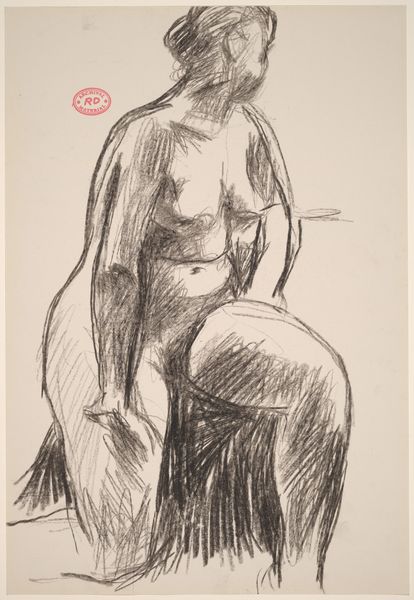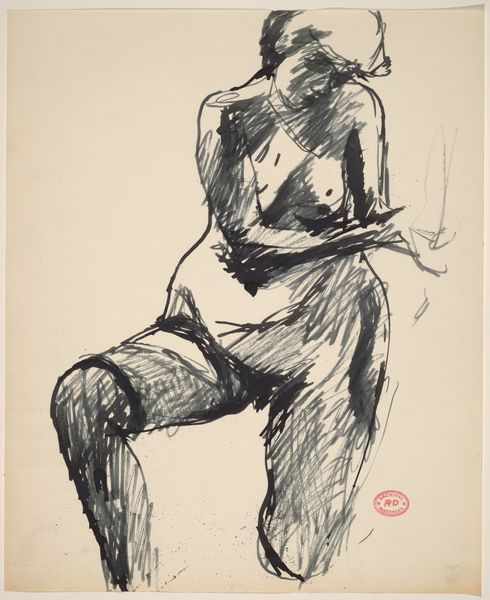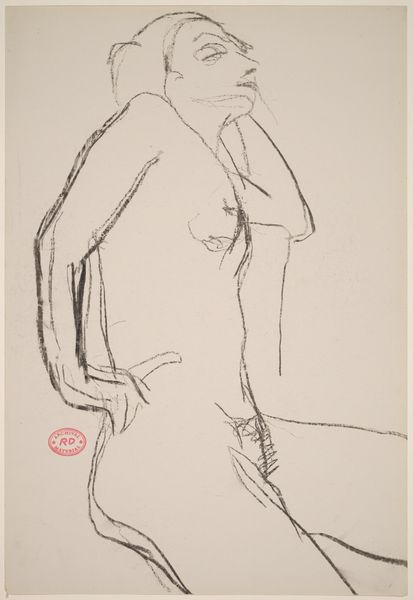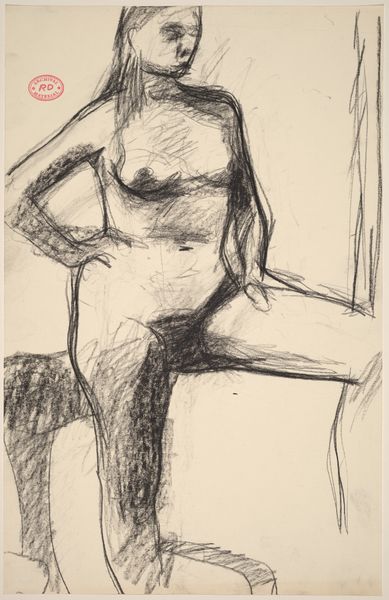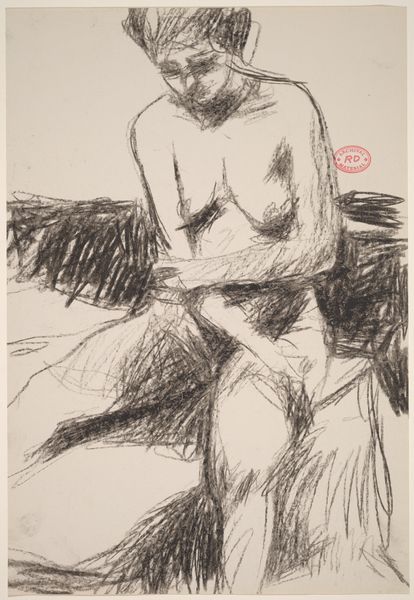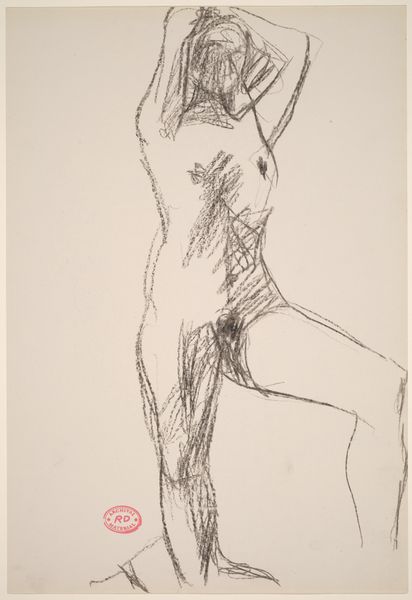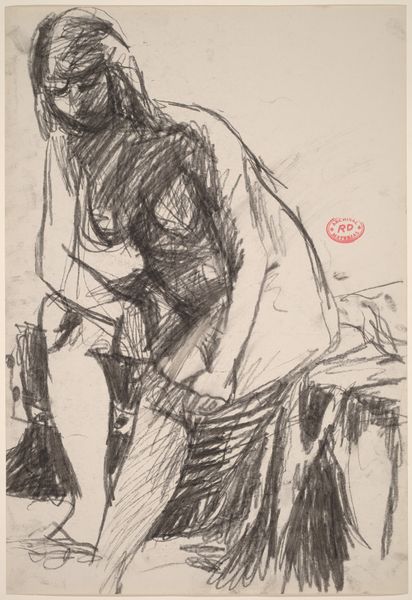![Untitled [standing model in bra and stockings] by Richard Diebenkorn](/_next/image?url=https%3A%2F%2Fd2w8kbdekdi1gv.cloudfront.net%2FeyJidWNrZXQiOiAiYXJ0ZXJhLWltYWdlcy1idWNrZXQiLCAia2V5IjogImFydHdvcmtzLzE1MGZkNzU5LWZlNjYtNGY5Ny05YTVlLWZkMTk4MmVhZmU2Yy8xNTBmZDc1OS1mZTY2LTRmOTctOWE1ZS1mZDE5ODJlYWZlNmNfZnVsbC5qcGciLCAiZWRpdHMiOiB7InJlc2l6ZSI6IHsid2lkdGgiOiAxOTIwLCAiaGVpZ2h0IjogMTkyMCwgImZpdCI6ICJpbnNpZGUifX19&w=3840&q=75)
Untitled [standing model in bra and stockings] 1955 - 1967
0:00
0:00
drawing
#
portrait
#
drawing
#
figuration
#
bay-area-figurative-movement
#
academic-art
#
nude
#
modernism
Dimensions: overall: 40.6 x 27.9 cm (16 x 11 in.)
Copyright: National Gallery of Art: CC0 1.0
Editor: This is Richard Diebenkorn’s "Untitled [standing model in bra and stockings]", created sometime between 1955 and 1967. It's a drawing, very gestural and raw, almost unfinished. The pose, combined with the lingerie, has an unsettling vulnerability. What are your thoughts? Curator: That feeling of vulnerability you pick up on is crucial. This drawing exists within a complex web of post-war anxieties around the female body, both as object and subject. Considering it was created during the second-wave feminist movement, how do you see the artist engaging with, or perhaps resisting, the dominant representations of women at that time? Editor: It's difficult to say. On one hand, it's another nude study, contributing to the objectification. But the sketchiness, the lack of idealization, maybe it complicates that? It doesn't feel celebratory in a male gaze kind of way. Curator: Exactly. Diebenkorn avoids a hyper-idealized form, highlighting the imperfections and presenting a figure with a downcast gaze. How does this challenge the traditional power dynamic between artist and model? Think about how artists like Diebenkorn walked a tightrope in trying to represent women in new ways while also navigating the heavily gendered art world. Editor: I guess it makes the viewer question their own role too, instead of just passively consuming an image. It's less about admiration, more about contemplation. Curator: Precisely. It's not just about aesthetic appreciation, but an invitation to critically examine the historical, social and artistic power structures at play, and to place it within broader discourses surrounding body image. Editor: So by understanding that context, we can read this drawing as something more than just a nude, maybe as a subtle act of defiance? Curator: I think it’s crucial that we understand that Diebenkorn isn’t offering an absolute solution, but providing a visual field for complex reflection. Editor: This has totally shifted my understanding. It's not just about what’s on the page, but about everything *around* the page, the cultural atmosphere. Curator: Precisely. Art history thrives on these contextual nuances.
Comments
No comments
Be the first to comment and join the conversation on the ultimate creative platform.

